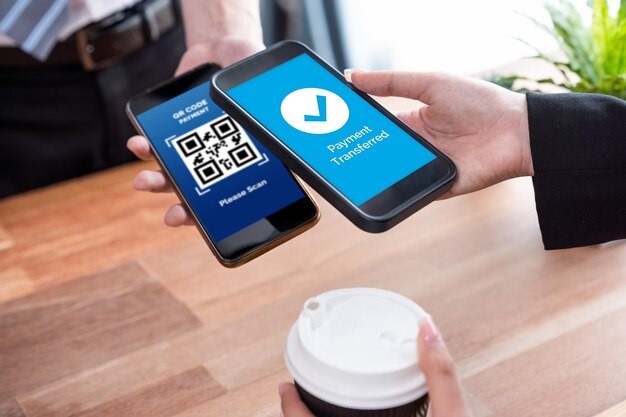Unified Payment Interface (UPI) is a popular payment system developed by the National Payments Corporation of India (NPCI).
UPI allows users to transfer funds between bank accounts instantly, without the need for entering bank details, such as the account number and IFSC code.
UPI apps have become increasingly popular due to its convenience and security. It is not only used for online transactions but also for offline transactions, such as paying utility bills or making purchases at a local store.
However, there are some best practices that users need to follow to ensure that their UPI transactions are safe and secure.
UPI has revolutionized mobile banking and has become one of the most popular payment methods in India.
It allows users to transfer money instantly and free of charge between bank accounts by simply creating a UPI ID, which is a unique identification for a bank account.
The UPI ID is used to send and receive funds securely from one bank to another, ensuring that transactions are safe and secure.
To transfer money through UPI, users need to set up a UPI PIN, which is a 4-digit personal identification number.
The UPI PIN is unique to each account holder and is required to authenticate transactions.
This ensures that only the account holder can initiate transactions and reduces the risk of fraud.
With UPI, users can make direct bank-to-bank transfers by simply downloading the UPI payment application, creating a UPI account, and entering the receiver’s contact number.
This eliminates the need for entering bank details such as account number and IFSC code, making transactions more convenient than ever before.
Here are some tips for using UPI for online and offline transactions:
1. Use a Trusted UPI App
Not all UPI apps are created equal. Some apps may not be as secure as others. Therefore, always use a trusted UPI app. Bajaj Finserv app is a highly-rated UPI app that provides users with a simple and secure way to transfer funds.
2. Verify UPI ID
Always verify the UPI ID of the person or entity before making a transaction. UPI ID is a unique identifier linked to a bank account. It is important to verify the UPI ID to ensure that you are transferring funds to the right account.
3. Set up UPI PIN
UPI PIN is a four or six-digit PIN that is required to authenticate UPI transactions. Set up a strong UPI PIN, and do not share it with anyone.
4. Set Transaction Limit
Set a transaction limit to ensure that the UPI transaction is within your budget. This will help prevent overspending and ensure that you have sufficient funds in your account.
5. Use UPI in A Secure Environment
Always use UPI in a secure environment. Do not make UPI transactions on public Wi-Fi, as it may pose a security risk. Also, avoid using UPI on public computers or devices.
6. Keep Transaction Records
Always keep a record of UPI transactions. This will help you track your spending and ensure that the transactions are legitimate.
7. Update UPI App
Make sure that you have the latest version of the UPI app. Updates often include security patches that can help protect your transactions.
In conclusion, UPI is a convenient and secure payment system that can be used for both online and offline transactions.
However, it is important to follow best practices to ensure that transactions are safe and secure.
Using a trusted UPI app, verifying UPI ID, setting up UPI PIN, setting transaction limits, using UPI in a secure environment, keeping transaction records, and updating UPI app are some of the best practices that you can follow.
UPI apps have been a game-changer in the Indian payment industry, offering a convenient way to transact money without the need for cash.
However, like any other payment system, UPI apps have their advantages and disadvantages.
Here is a closer look at the advantages of using UPI apps:
1. Cashless Transactions
With UPI apps, you can make cashless transactions, making it easier and more convenient for people to pay for goods and services without the need for cash.
2. Ease of Use
UPI apps are very user-friendly, with a clean and intuitive interface that makes it simple for anyone to transact money.
3. Low Transaction Fees
UPI transactions have low transaction fees when compared to other payment methods. This makes UPI apps an affordable way to send money.
4. Seamless Integration
UPI apps can be integrated with other apps, such as e-commerce apps and bill payment apps, making it easier to manage your finances from one place.
Learning how to use a UPI app is essential if you want to make hassle-free transactions.
Here is a step-by-step guide on how to use a UPI app:
Step 1: Download and Install the UPI App
The first step is to download and install the UPI app from the Google Play Store or Apple App Store, depending on your device.
Step 2: Link Your Bank Account
After installation, link your bank account to the app. Enter your bank details and verify your mobile number with your bank.
Step 3: Set Up a UPI PIN
Set up a unique and strong four or six-digit UPI PIN that you can remember easily. This PIN is used to authenticate transactions on the app.
Step 4: Add a Beneficiary
To send money, you need to add the recipient as a beneficiary on the app. To do this, provide their UPI ID, which is their virtual payment address.
You can also add a beneficiary using their mobile number or bank account number and IFSC code.
Step 5: Make a Transaction
Choose the recipient enter the amount to transfer andauthenticate the transaction using your UPI PIN. Add a note or remark to the transaction to help you remember its purpose.
Step 6: Check the Transaction Status
View the transaction history and track the status of each transaction via the app.
Step 7: Use Additional Features
Some UPI apps offer features like bill payments, mobile recharge, and value-added services, making it easier and more efficient to manage your transactions.
Once you have completed these steps, you can start using your UPI app for online and offline transactions, knowing that you are making secure and efficient transfers.
Bajaj Finserv app is a highly rated UPI app that provides users with a simple and secure way to transfer funds. Other popular UPI mobile apps include Google Pay, PhonePe, and Paytm.
However, Bajaj Finserv app has some unique features that make it stand out from the competition. Download the Bajaj Finserv app today and start using UPI to make safe and secure transactions.

